 At the beginning of every year, we make a pact with ourselves to make the next year better than the last. We pick a resolution and vow to stick to it in order to make a positive change in our life – but, what about your furry companions? Believe it or not, your pup probably has a very similar list of things that they would like to change about their lives (even if they don’t know it!), so when making your New Year’s Resolution for 2012, be sure to include one for your dog as well. By helping your pet improve their life, you may also be completing your goal as well!
At the beginning of every year, we make a pact with ourselves to make the next year better than the last. We pick a resolution and vow to stick to it in order to make a positive change in our life – but, what about your furry companions? Believe it or not, your pup probably has a very similar list of things that they would like to change about their lives (even if they don’t know it!), so when making your New Year’s Resolution for 2012, be sure to include one for your dog as well. By helping your pet improve their life, you may also be completing your goal as well!
Resolution #1: Learn a new skill
 Dogs crave mental stimulation, and what better way to give their brain some exercise than to teach them some new commands? Is your pup pulling on leash? Jumping all over your guests? Peeing in the house? Then you will be getting a two-for-one special when you teach your dog a fun “trick” (because that is what all dog training commands basically are!) that will not only give him a way to release some mental energy, but also improve your relationship. A good mannered dog means less stress not only for you, but for Fido as well.
Dogs crave mental stimulation, and what better way to give their brain some exercise than to teach them some new commands? Is your pup pulling on leash? Jumping all over your guests? Peeing in the house? Then you will be getting a two-for-one special when you teach your dog a fun “trick” (because that is what all dog training commands basically are!) that will not only give him a way to release some mental energy, but also improve your relationship. A good mannered dog means less stress not only for you, but for Fido as well.
Resolution #2: Spend more time with friends & family
 Dogs are social animals that crave companionship not only with people, but with their fellow dogs as well. Making sure that Fido has regular play dates with his doggie pals will not only tire him out, but also give him to opportunity to be a “real” dog. Keeping dogs socialized, especially from a young age, lessens the likelihood of dog-to-dog issues. Also, studies have shown that having a dog lengthens your life, so grab Fido’s favorite toy and have a ball!
Dogs are social animals that crave companionship not only with people, but with their fellow dogs as well. Making sure that Fido has regular play dates with his doggie pals will not only tire him out, but also give him to opportunity to be a “real” dog. Keeping dogs socialized, especially from a young age, lessens the likelihood of dog-to-dog issues. Also, studies have shown that having a dog lengthens your life, so grab Fido’s favorite toy and have a ball!
Resolution #3: Get healthy
 Like humans, dogs need a balanced diet and regular exercise to stay in the best shape possible and live a happy life. Take a look at the ingredients in your dog’s food and make sure that the first thing on the list is an actual protein (“byproducts” don’t count!), and cut out all but the occasional table scrap. Daily walks, runs, or fetch sessions will keep your pup in tip-top shape, give them more energy, and let them live longer lives. Keeping a healthy pet requires a little more time on your part, but your wallet will thank you when you don’t have to make quarterly visits to the vet!
Like humans, dogs need a balanced diet and regular exercise to stay in the best shape possible and live a happy life. Take a look at the ingredients in your dog’s food and make sure that the first thing on the list is an actual protein (“byproducts” don’t count!), and cut out all but the occasional table scrap. Daily walks, runs, or fetch sessions will keep your pup in tip-top shape, give them more energy, and let them live longer lives. Keeping a healthy pet requires a little more time on your part, but your wallet will thank you when you don’t have to make quarterly visits to the vet!
Resolution #4: Help others
 It is always rewarding to give back to those that are less fortunate than ourselves, and dogs feel the same way! Don’t keep those big brown eyes and sweet personality all to yourself – sign Fido up to visit your local hospital, special needs school, or assisted living facility to brighten someone’s day. Having a doggie companion while undergoing or recovering from a procedure can serve as a distraction and make pain more bearable, or help a shy child feel confident enough to read out-loud. To your dog, giving is just as fun as receiving!
It is always rewarding to give back to those that are less fortunate than ourselves, and dogs feel the same way! Don’t keep those big brown eyes and sweet personality all to yourself – sign Fido up to visit your local hospital, special needs school, or assisted living facility to brighten someone’s day. Having a doggie companion while undergoing or recovering from a procedure can serve as a distraction and make pain more bearable, or help a shy child feel confident enough to read out-loud. To your dog, giving is just as fun as receiving!
Resolution #5: Lose weight
 Obesity is a growing and serious problem among dogs, just as it is with people. Overweight dogs have shorter lives, less energy, and are more prone to arthritis. Losing weight is the number one resolution among humans, so take Fido with you on your morning walk or jog and you’ll be fulfilling not one, but two goals! Getting back into shape is always easier with a partner to keep you company and occasionally drag you out of bed on those cold mornings! Getting fit with your dog will not only help your figure, but strengthen your relationship with Fido as well.
Obesity is a growing and serious problem among dogs, just as it is with people. Overweight dogs have shorter lives, less energy, and are more prone to arthritis. Losing weight is the number one resolution among humans, so take Fido with you on your morning walk or jog and you’ll be fulfilling not one, but two goals! Getting back into shape is always easier with a partner to keep you company and occasionally drag you out of bed on those cold mornings! Getting fit with your dog will not only help your figure, but strengthen your relationship with Fido as well.
Whichever New Year’s resolution (or resolutions!) you choose, we wish you the best success! Even if your resolution isn’t on this list, we hope that your positive change in Fido’s life lasts beyond the upcoming twelve months and transforms into a healthy and happy habit. Make 2012 the year that you and Fido work not only on yourselves, but also on your bond with each other as well. Happy New Year!
0.000000
0.000000
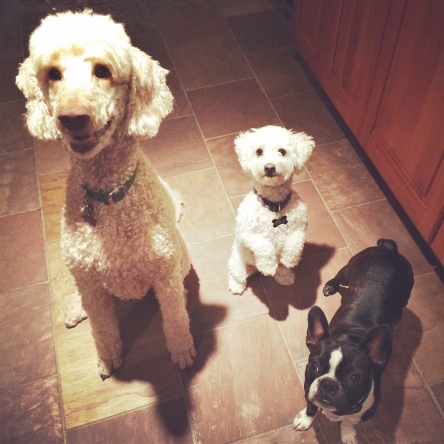 I like to think that I’m a pretty experienced baker but have never tried making treats for my dogs. I found a couple of good, healthy, and potentially grain free recipes to try out. So for this trial round I’m going to try a peanut butter sweet potato treat that makes roughly 2 dozen cookies.
I like to think that I’m a pretty experienced baker but have never tried making treats for my dogs. I found a couple of good, healthy, and potentially grain free recipes to try out. So for this trial round I’m going to try a peanut butter sweet potato treat that makes roughly 2 dozen cookies.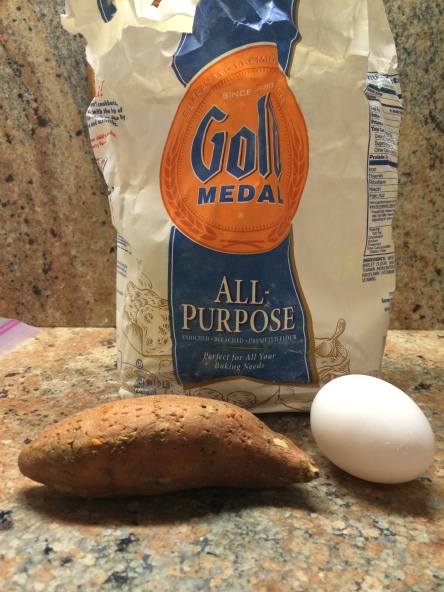 3 sweet potatoes (you can use canned if you don’t want to bake some potatoes)
3 sweet potatoes (you can use canned if you don’t want to bake some potatoes)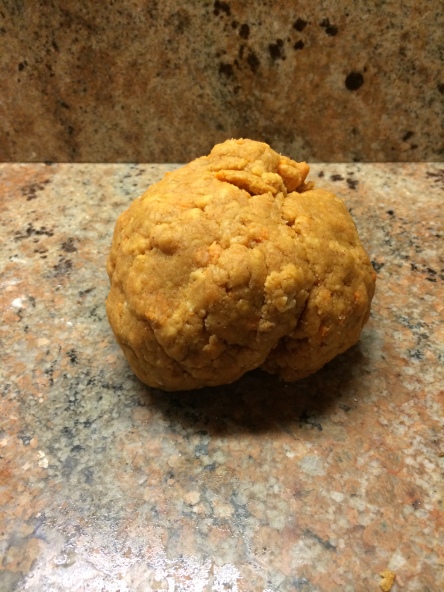

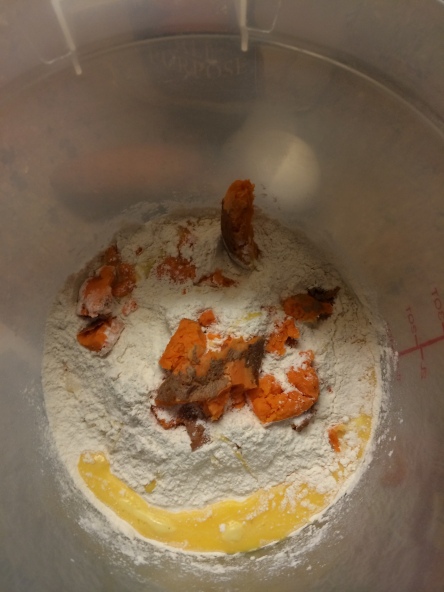

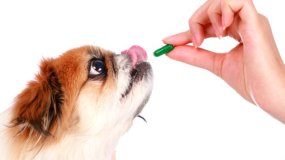






 He’s cute, he’s cuddly, and he’s driving you crazy! Your new puppy Fido piddles all over the house, chews up your favorite pair of shoes, and his sharp puppy teeth scratch you whenever you
He’s cute, he’s cuddly, and he’s driving you crazy! Your new puppy Fido piddles all over the house, chews up your favorite pair of shoes, and his sharp puppy teeth scratch you whenever you 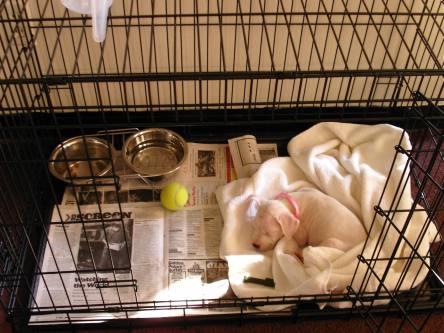





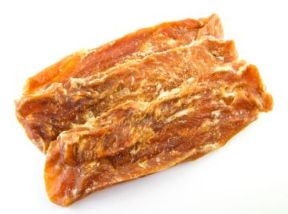 Are these jerky treats your dog’s favorite bedtime snack or
Are these jerky treats your dog’s favorite bedtime snack or 
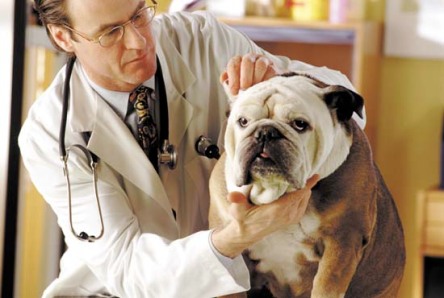 ous pooch
ous pooch